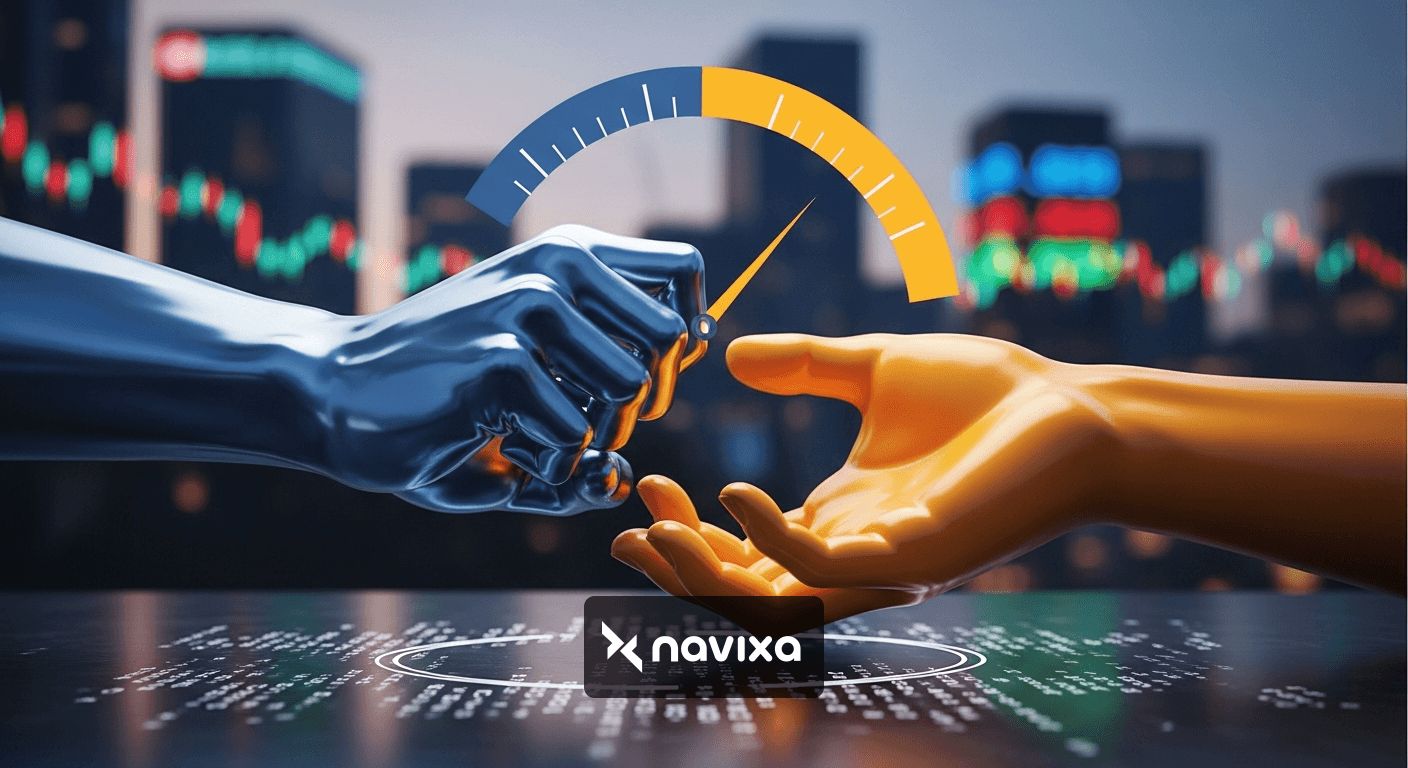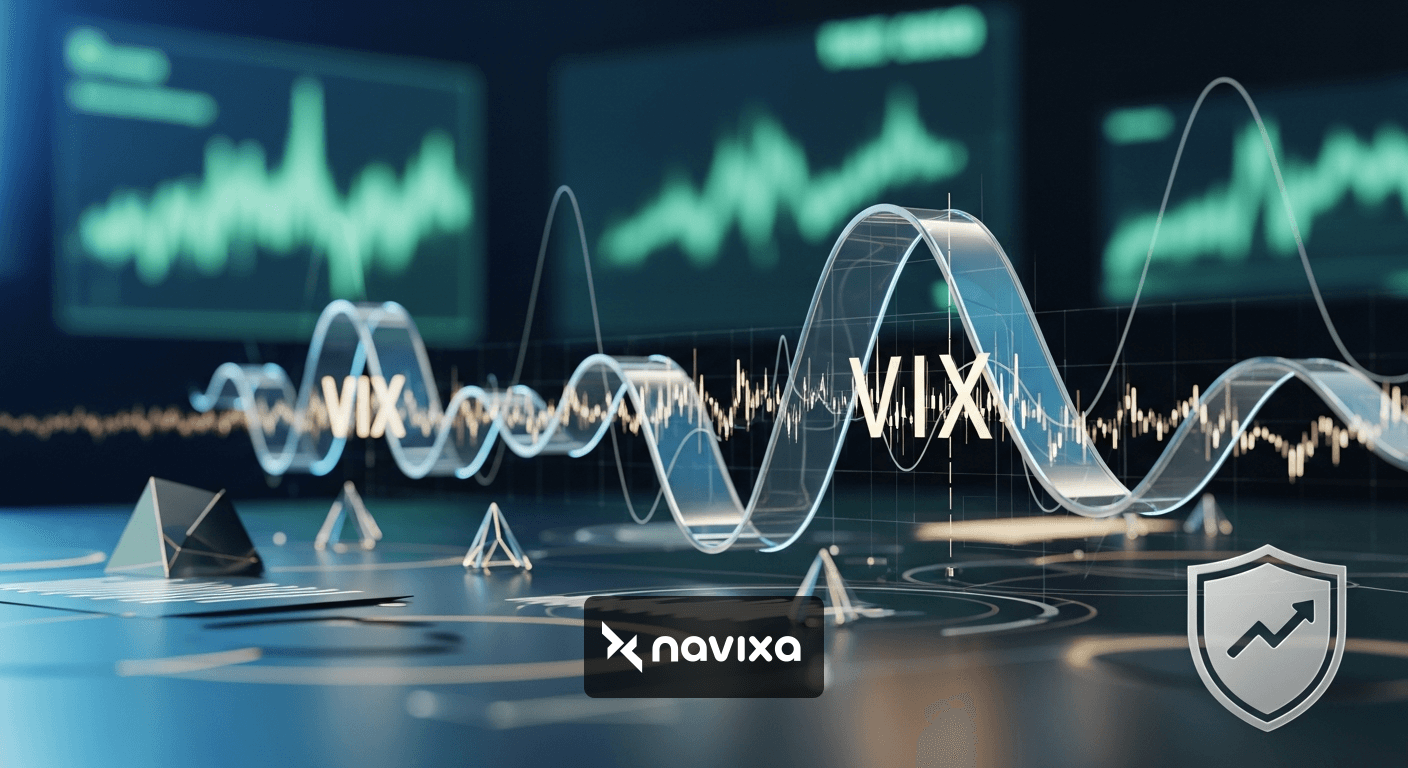Table of content
In the high-stakes world of cryptocurrency trading, emotions are often the biggest driver of price action. While charts, candlesticks, and volume profiles tell you what the market is doing, they don't always tell you how investors are feeling. This is where the Crypto Fear and Greed Index becomes an indispensable tool in a trader's arsenal.
Legendary investor Warren Buffett famously advised to "be fearful when others are greedy, and greedy when others are fearful." In traditional markets, this is sound advice. In the volatile cryptocurrency ecosystem, it is often the difference between a portfolio that gets liquidated and one that generates generational wealth. The crypto market is notoriously emotional; people get greedy when the market is rising, resulting in FOMO (Fear of Missing Out), and they often sell their coins in an irrational reaction to seeing red numbers.
This comprehensive guide will break down exactly what the Crypto Fear and Greed Index is, how it is calculated, and—most importantly—how you can build actionable trading strategies around it to profit from mass psychology.
What Is the Crypto Fear and Greed Index?
The Crypto Fear and Greed Index is a metric designed to gauge the current sentiment of the cryptocurrency market. It processes data daily to produce a single number ranging from 0 to 100. A score of 0 represents "Extreme Fear," while a score of 100 represents "Extreme Greed."
The core philosophy behind the index is based on behavioral finance. When the index indicates extreme fear, investors are likely too worried, which presents a buying opportunity. Conversely, when investors get too greedy, the market is likely due for a correction. The index primarily analyzes Bitcoin but serves as a proxy for the broader crypto market due to Bitcoin's correlation with altcoins.
The 6 Data Sources Behind the Score
To understand how to trade the index, you must first understand what drives it. It is not a random number; it is a weighted composite of six specific market factors:
1. Volatility (25%): The index compares current volatility and maximum drawdowns of Bitcoin with the corresponding average values of the last 30 and 90 days. An unusual rise in volatility is a sign of a fearful market.
2. Market Momentum/Volume (25%): This measures current volume and market momentum against 30/90 day averages. High buying volumes in a positive market push the index toward greed.
3. Social Media (15%): Through sentiment analysis of hashtags on platforms like X (formerly Twitter), the index tracks how fast and how many interactions are occurring. High interaction rates usually correspond to growing public interest (Greed).
4. Dominance (10%): A rise in Bitcoin dominance often indicates fear, as investors flee risky altcoins for the relative safety of Bitcoin. Conversely, when Bitcoin dominance drops, it usually signals an "alt-season" fueled by greed.
5. Trends (10%): Using Google Trends data for various Bitcoin-related search queries. High search volumes for negative terms indicate fear, while hype-driven terms indicate greed.
6. Surveys (15%): (Currently paused by some providers) This aspect gathers direct feedback from the community regarding their outlook.
Reading the Zones: From Extreme Fear to Extreme Greed
Interpreting the number correctly is crucial for timing your trades. The scale is generally broken down into four distinct psychological zones.
Extreme Fear (0–24)
This is the zone of capitulation. Prices are crashing, volatility is spiking, and social media is filled with "crypto is dead" narratives. While terrifying, this is historically the best time to buy. Buying when the index is below 10 has historically yielded the highest long-term ROI.
Fear (25–49)
The market is cautious. Prices may be moving sideways or slowly bleeding. This zone often represents accumulation phases where smart money quietly builds positions while retail investors are too hesitant to enter.
Greed (50–74)
Confidence returns. Green candles appear frequently. The phrase "we are back" trends on social media. This is typically a trend-continuation zone where holding positions is profitable, but opening new leverage requires caution.
Extreme Greed (75–100)
This is the zone of euphoria. Your Uber driver is asking about Altcoins. Mainstream media is covering Bitcoin price all-time highs. While prices can climb parabolically here, the risk of a violent correction is at its peak. Smart traders begin taking profits in this zone.
Actionable Trading Strategies Using the Index
Now that you understand the metrics, let's discuss how to apply them to actual trading setups. The index should rarely be used in isolation, but it is a powerful filter for broader strategies.
1. The Dynamic DCA (Dollar Cost Averaging) Strategy
Standard DCA involves buying a fixed amount of crypto at fixed intervals (e.g., $100 every Monday). A Dynamic DCA adjusts the investment amount based on sentiment.
For example:
• Index 50–100 (Neutral/Greed): Buy $100 (Normal)
• Index 20–49 (Fear): Buy $150 (1.5x multiplier)
• Index 0–19 (Extreme Fear): Buy $200 (2x multiplier)
This approach ensures you accumulate significantly more assets when prices are depressed due to fear, lowering your average entry price drastically compared to a standard linear DCA.
2. The Contrarian Swing Trade
Swing traders can use the index to identify local tops and bottoms. A popular strategy involves looking for divergence. If the price of Bitcoin makes a higher high, but the Fear and Greed Index makes a lower high (showing waning enthusiasm), it is a bearish divergence signal suggesting a reversal.
Conversely, if price dumps but the Index refuses to go lower (e.g., stays at 10 for a week while price drops another 5%), it suggests sellers are exhausted—a prime setup for a long position.
Sentiment Matrix: When to Buy and Sell
Below is a simplified matrix to help you align your trading decisions with market sentiment zones.
| Sentiment Zone | Index Range | Market Psychology | Suggested Action |
|---|---|---|---|
| Extreme Fear | 0 – 24 | Panic, Capitulation, Despair | Strong Buy / Aggressive Accumulation |
| Fear | 25 – 49 | Uncertainty, Caution, Doubt | Buy / DCA / Hold |
| Neutral | 50 – 54 | Indecision, Equilibrium | Hold / Monitor Technicals |
| Greed | 55 – 74 | Confidence, FOMO starting | Hold / Tighten Stop Losses |
| Extreme Greed | 75 – 100 | Euphoria, Irrational Exuberance | Take Profits / Reduce Risk |
Combining Sentiment with Technical Analysis
One of the biggest mistakes novice traders make is trading solely off the Fear and Greed Index. While powerful, it is a sentiment indicator, not a timing tool. A market can stay in "Extreme Greed" for months during a parabolic bull run (e.g., late 2020 to early 2021). Shorting the moment the index hits 80 can result in liquidation as the price doubles.
To use it effectively, you must pair it with technical analysis indicators:
1. RSI (Relative Strength Index)
Look for confluence. If the Fear and Greed Index is at 10 (Extreme Fear) AND the daily RSI is below 30 (Oversold), the probability of a bounce is incredibly high. This double signal confirms both sentiment and momentum are exhausted.
2. Support and Resistance Zones
Never buy just because there is fear. Buy because there is fear AND price has reached a major historical support level. If Bitcoin crashes to a 200-week moving average and the Index reads 8, that is a high-conviction trade setup.
The Psychology of the Market Cycle
Understanding the index requires understanding yourself. Human brains are wired to seek safety in numbers. When everyone is buying, our brain releases dopamine, making us feel safe. When everyone is selling, our amygdala (the fear center) activates, urging us to flee.
Successful trading requires rewiring this biological response. You must train yourself to feel uncomfortable. Buying when the index is red is uncomfortable. Selling when your portfolio is up 50% in a week is uncomfortable. But as noted by Investopedia, herd behavior often leads to asset bubbles and subsequent crashes. The Fear and Greed Index is essentially a "Herd Behavior Meter." Use it to separate yourself from the herd.
Limitations and Risks
No indicator is perfect. The Crypto Fear and Greed Index is a lagging indicator in some respects—it reacts to volatility that has already happened. Furthermore, during "super-cycles" or massive institutional inflows (like the launch of Spot Bitcoin ETFs), the index can remain in Extreme Greed for extended periods without a price correction. Relying on it exclusively to short the market is a dangerous game often referred to as "standing in front of a steamroller."
Additionally, the index is heavily weighted toward Bitcoin. While it serves as a good proxy for the market, specific altcoins may decouple from Bitcoin's sentiment due to specific news or project developments.
Conclusion: Mastering Your Emotions
The Crypto Fear and Greed Index is more than just a number; it is a mirror reflecting the collective emotional state of the market. By learning to read this mirror, you can identify moments of maximum opportunity and maximum risk that invisible to the naked eye.
Remember, the goal is not to predict the future perfectly but to align your trades with probability. Buying fear and selling greed puts the probabilities in your favor. Integrate this tool into your daily analysis routine, pair it with solid technicals, and you will find yourself trading with the clarity of a professional rather than the panic of the crowd.
Are you ready to take control of your trading psychology? Start by checking the index today and asking yourself: Is the market reacting rationally, or is it time to be a contrarian?






